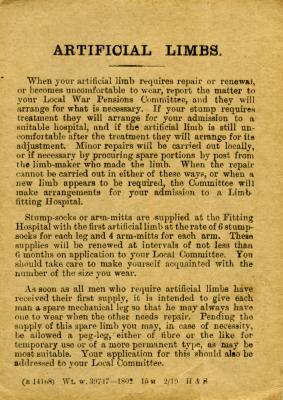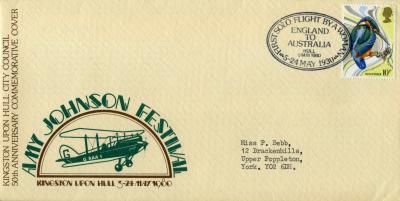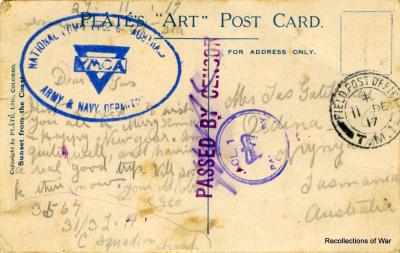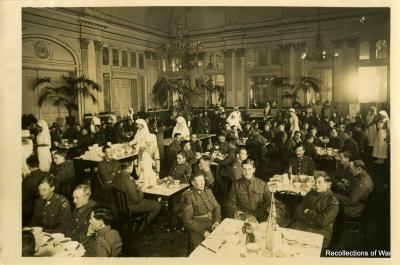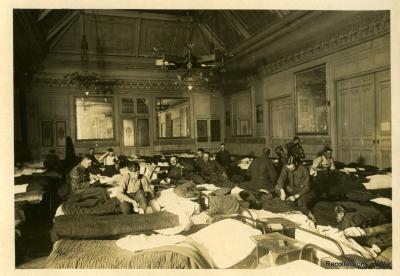Two information booklets issued to disabled soldier, Benjamin David Jones
c. 1918Two information booklets issued to disabled soldier, Benjamin David Jones after his medical discharge from the British Army.
The first publication is entitled 'To Disabled Soldiers and Sailors: a few notes on the advantages of training for your future career' by Major Robert Mitchell. C.B.E., Director of Training with the Ministry of Pensions. It has 16 pages and is profusely illustrated with photographs of disabled soldiers training in a variety of occupations. These include dental mechanics, watch and clock repairing, naval and military embroidery, cinema operators, diamond cutting and polishing, agricultural classes and a number of occupations for the one-armed man. Information is provided about the availability and location of courses and financial support offered by the Ministry of Pensions while training is undertaken.
The second publication is entitled 'The Disabled Soldier's Handbook 1918', also produced by the Ministry of Pensions. It has 32 pages providing information about a broad range of relevant topics including pensions, insurance, medical treatment, employment and training.
Both are made from cream coloured paper with black lettering and are held together at the spine by metal staples.
These two booklets were issued to Benjamin David Jones upon his discharge from the British Army. They contain information relevant to disabled soldiers and sailors who were injured due to their service during World War One.
They are a sample of a much larger grouping of paperwork relating to the life and service of Benjamin Jones which is held in the collection. It includes student records from the 'London County Council Evening Institutes' where Benjamin was instructed in Electrical Instrument Fitting between 1913-1915.
It also contains his military forms - enlistment card, railway warrant, registration with the Army Reserve, the notification that he was missing from the Army, postcards sent as a POW, various forms relating to his furlough and attendance at the Limbless hospitals for treatment, and correspondence with the Ministry of Pensions. There are several booklets issued to Benjamin regarding retraining and employment opportunities, and his discharge certificate showing his occupation as a gas engine attendant.
Benjamin David Jones was born 25 June 1898 in Southwark, London, England, to Benjamin David Jones and Clara Eliza Morpeth.
After his mother died in 1905, his father remarried in 1906 to a widow, Alice Caroline Lunn (nee Ansell) with 3 young children of her own. Benjamin had 2 sisters, 1 brother, 2 half-sisters, 7 half-brothers, 2 stepsisters and 1 stepbrother.
Between 1901 and 1905, the family moved to 38 Rookstone Road, Tooting, a house which would remain in the family until Benjamin’s death in 1983.
On 6 July 1915, aged just 18, Benjamin enlisted with 3rd Battalion East Surrey Regiment. service no. 9104.
On 1 Nov 1917, he was posted from 1st Battalion to 3rd Battalion East Surrey Regt. and his service no. given as 24760. On 20 Nov 1917, he was transferred from East Surrey to 2/4th East Lancashire (East Lancs.) Regiment and given a third service no. - 30390.
On 21 March 1918, he was posted as ‘Missing after Engagement’. Benjamin was in A company of the 4th East Lancs. They were part of the 66th Division who held a sector east of Peronne at The Somme. Records indicate Benjamin was in an area near Hargicourt. The Germans launched a spring offensive (known as Kaiserschlacht or 2nd Battle of Picardy). The full weight of the German assault fell on the division. The 4th East Lancs, in the front line, were attacked from the rear and overwhelmed. The 4th Battalion was reduced to just one officer and about 20 men after the battle.
On 19 May 1918, his parents were informed that Benjamin was missing, and in July 1918, received notification that Benjamin was a Prisoner of War. He was being held at Munster II in Germany.
On 20 July. a letter home notes that he has been injured in the arm and leg after a bombing raid. He would subsequently have his right leg amputated from just below the thigh.
On 19 June 1919, Benjamin was discharged from Army as ‘no longer physically fit for war service’. He had served 2 years and 295 days with the Colours and 54 days with the Army Reserve. On the same day, he was discharged from Queen Mary’s Convalescent Auxiliary Hospital, Roehampton.
He received the British War and Victory medals and was also awarded the Silver Wound Badge.
On 12 Nov 1922, Benjamin married Alice Kate Louisa Lunn (born 18 September 1897), the daughter of William Lunn and Alice Caroline Ansell, and also his stepsister.
They had three children – Dorothy Alice born 1923, Phyllis born 1928, and Ronald David born 1930.
In the 1939 Census, he was living with wife and two children at Brightwell Crescent (adjoining Rookstone Road). His occupation was noted as a ‘Motor Driver’ for a laundry, likely to be the one which his father owned.
Letters written between Benjamin and the Ministry of Pensions carried on until at least 1947, when his disability class was being reassessed.
On 25 July 1980, his wife died, and on 19 March 1983, Benjamin died, aged 84.
Details
Details
Related Objects
Related Objects
More items like this
Other items from Recollections of War
- Display folder containing paperwork belonging to disabled soldier Benjamin David Jones
- Souvenir postal cover issued during the Amy Johnson Festival held in Kingston Upon Hull from 3-24 May 1980
- Postcard sent by George Henry Bramich, 3rd A.L.H., to Tasman Gatehouse, 27 November 1917
- British Army & Navy Leave Club (Paris) medallion
- Map showing location of The British Army & Navy Leave Club in Paris
- Photograph showing interior of the British Army & Navy Leave Club
- Photograph showing accommodation at the British Army & Navy Leave Club
- Queensland Ambulance Transport Brigade (Q.A.T.B.) silver badge
- Queensland Ambulance Transport Brigade (Q.A.T.B.) Ladies Committee silver badge
- Lead button from clothing worn by munitions worker
- Souvenir button welcoming 'The Digger Prince' to Australia
- Edith Cavell Army Nurses' Fund badge 1917
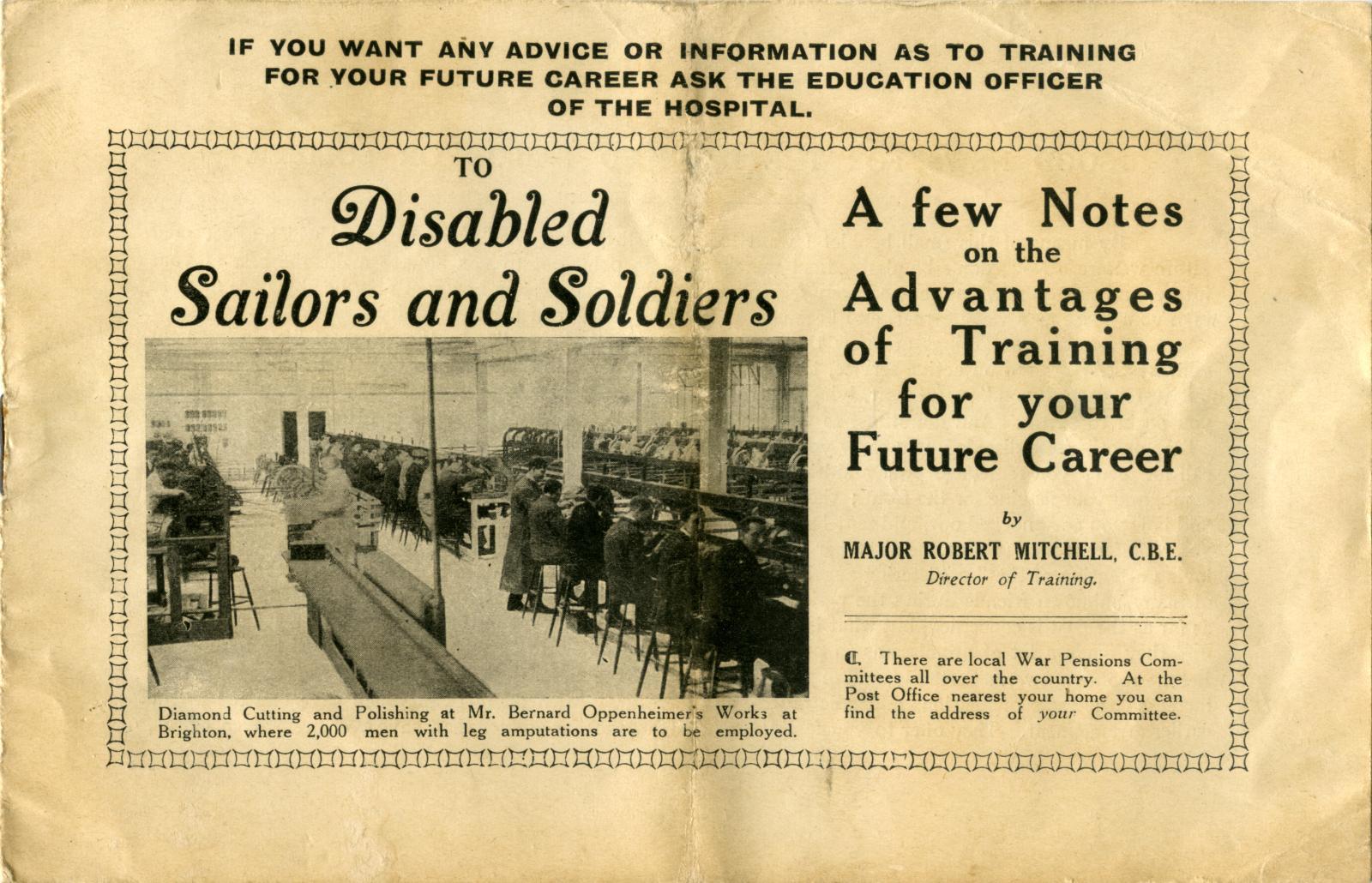
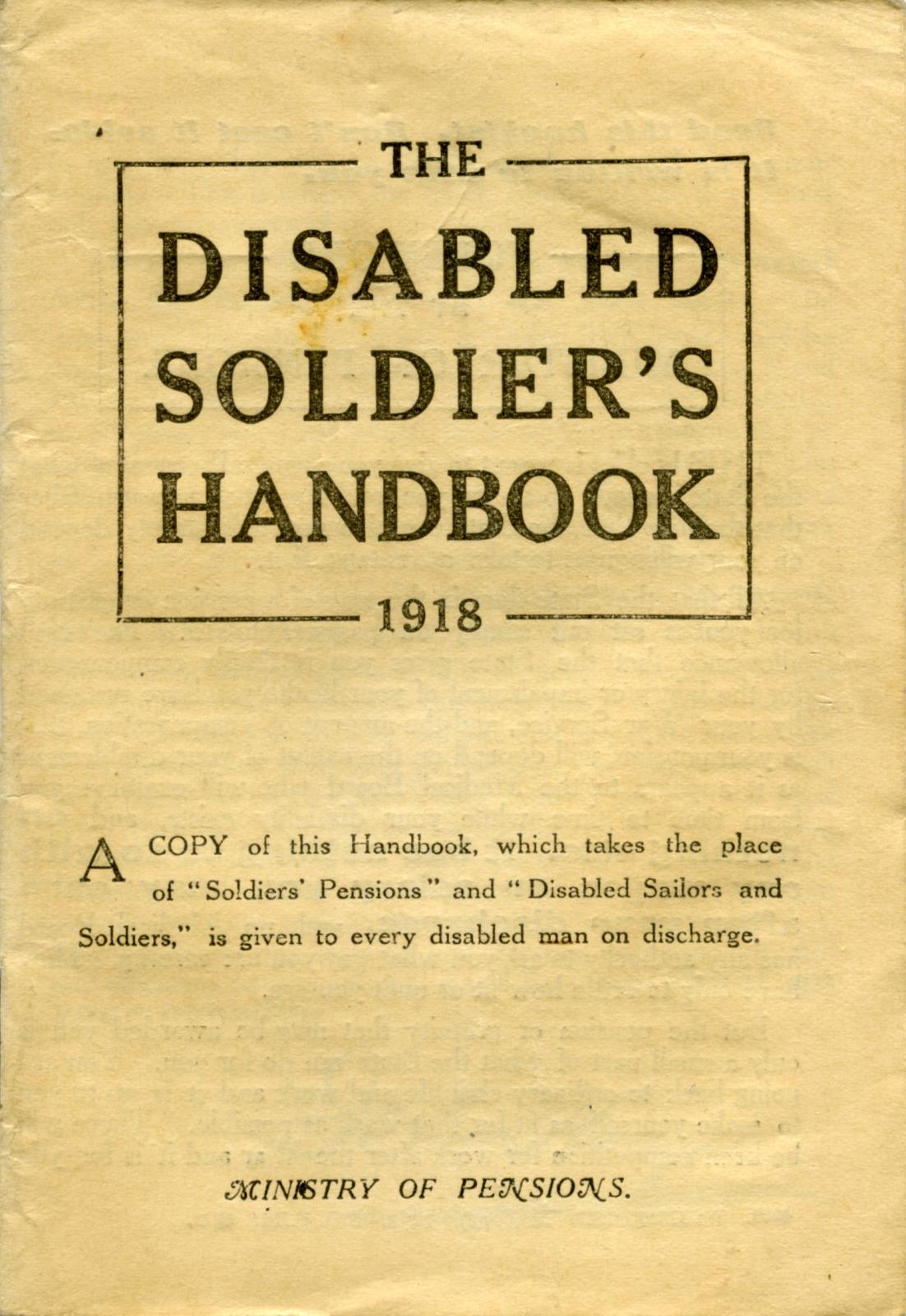
Scan this QR code to open this page on your phone ->

